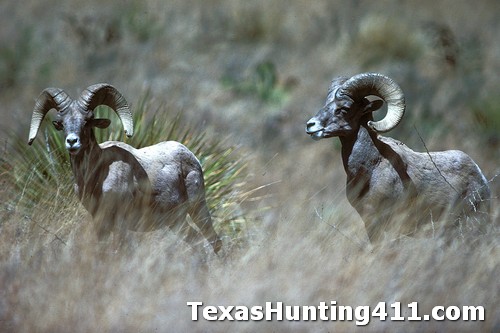Desert bighorn sheep once roamed all of the “sky islands” found in the Trans-Pecos region of Texas, but most were eliminated over 50 years ago by unregulated bighorn sheep hunting and disease introduction. Enter re-stocking efforts, increased regulations and conservation-minded landowners and bighorn sheep numbers have been going up and up over the past few decades; the bighorn sheep population has reached record highs! Texas Parks and Wildlife Department (TPWD) is responsible for making this happen. And although the bighorn program has been a success, it’s far from over.
In the largest desert bighorn sheep relocation operation in Texas history, a total of 95 desert bighorn sheep have been trapped this month in the mountains north of Van Horn and released about 190 miles away on Big Bend Ranch State Park. Of those captured, 76 were ewes and were 19 rams. The sheep were captured by helicopter on several private ranches and one of the state’s Wildlife Management Areas (WMA) located in the Beach, Sierra Diablo and Baylor mountain ranges of Culberson County. The animals were transported by trailer to the 300,000-acre state park in Presidio County.

The bighorn sheep restoration operation began December 12 at the civic center in Van Horn with a briefing for the 60 TPWD personnel and volunteers with the Texas Bighorn Society and Sul Ross University and continued through December 17. The sheep were released about 20 miles west of Lajitas, near Panther Canyon.
Last year, 46 bighorns (12 rams and 34 ewes) were captured by helicopter at Elephant Mountain WMA and moved to Big Bend Ranch State Park on December 21 and 22. Of those sheep, the first to be introduced to the state park, more than 30 are known to be alive today. “If most sheep survive, we may now have close to a sustainable population on the state park,” said Alpine-based Billy Tarrant, TPWD Wildlife Division district leader.
The restoration of bighorn sheep in Texas has been a conservation success story. “Back in the 1800s, we believe the Trans-Pecos supported around 3,000 bighorn sheep,” says Froylan Hernandez, TPWD’s bighorn sheep program leader. “But by the 1960s, unregulated bighorn sheep hunting and disease introduced through domestic sheep had made the bighorn extinct in Texas.” The last indigenous bighorn was sighted in the Sierra Diablo Mountains in October 1958, he said.
“Today, thanks to bighorn sheep restocking efforts that began more than 50 years ago, we estimate the Texas bighorn herd has increased to half its historic size and half its historic range.” TPWD’s goal is to get the Texas herd back to approximately 3,000, with colonies in most of the 16 mountain ranges with unoccupied critical habitat that sheep once inhabited. Bighorns can now be found in eight of those ranges, Hernandez said.
According to Hernandez, the removal of surplus sheep from the Baylor, Beach and Sierra Diablo Mountains will benefit the remaining herd in those three ranges, estimated at 800 animals, by reducing browsing pressure. In addition to supplementing the existing bighorn population in Big Bend Ranch State Park, the development of a robust herd in other areas also will allow future restocking efforts.
During the just-completed operation, TPWD used a private helicopter service to capture the sheep. When the pilot spotted a desirable sheep, a crew member used a gun that fired weighted nets to entangle the animal. Two “muggers” then jumped out of the low-hovering helicopter to blindfold and hobble the sheep, which was then placed a sling.
Once that was done, the helicopter took the sheep to a staging area where ground crews carried the animal to a check-in station where veterinarians took biological samples and wildlife biologists fitted some of the sheep with radio tracking collars. Then they were carefully loaded into trailers for the trip to Big Bend Ranch.
“Bighorn sheep are a flagship species,” Hernandez said. “Managing them well benefits all other species which share their habitat.” Texas only offers very limited bighorn sheep hunting, but thanks to funds collected from the sale of hunting licenses, it looks like Texas will have many more sheep on public hunting lands and private lands in the future.